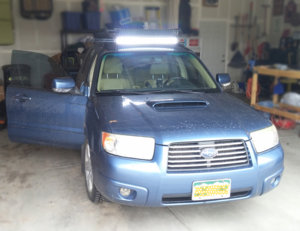Kind of beating an old dead horse here, but I was wondering how many people on here chase at night and the thoughts behind it. I don't myself, but I'm old and night chasing is past my bedtime and interferes with my nightly feeding. Do you do it most chases? How late will you stick with it? I'm also curious what kind of success rate you have at night. I find it interesting why some people do something I don't myself..
-
While Stormtrack has discontinued its hosting of SpotterNetwork support on the forums, keep in mind that support for SpotterNetwork issues is available by emailing [email protected].
You are using an out of date browser. It may not display this or other websites correctly.
You should upgrade or use an alternative browser.
You should upgrade or use an alternative browser.
Night chasing
- Thread starter Todd Lemery
- Start date
Randy Jennings
Supporter
- Joined
- May 18, 2013
- Messages
- 840
When we are out chasing and it gets dark, we usually keep chasing until the storm is no longer "interesting" or it changes into a MCS. The time required to drive home is a factor sometimes (it is a lot less interesting if there is a long drive home). The amount of lighting is a factor too (no lighting to see things makes us call the chase off). The other night we chased until 12:30 AM, but that was local. I've chased until about 10 PM when we had to drive from the caprock back to Dallas. You don't get good pics at night (unless you have tripod and are shooting lighting), but the challenge can be fun (although you have to be a little more conservative in your chase).
Ethan Lang
EF2
When I first started chasing, nearly all of my chases were at might, in fact my first chase was local on a supercell that came up from the south and passed my town about ten miles to the west and it had some of the craziest lightning not to mention some pretty cool gustnados when the storm gusted out
Sent from my XT1039 using Stormtrack mobile app
Sent from my XT1039 using Stormtrack mobile app
Marc R. O'Leary
EF5
Ben Holcomb
EF5
I liken it to using IFR/ILS while flying. Yeah in the olden days you would have to visually chase and visually fly, but nowadays its all done by cool instruments and as long as you have good instruments and systems it's ok to fly at night and chase at night. Just keeping situational awareness is the best. Which way is the wind coming? What does the radar show? Is it up to date?
JamesCaruso
Staff member
I usually call it once it's dark. This is for various reasons, including safety, low possibility of actually being able to see anything interesting, as well as being generally fatigued by then and wanting to just find a hotel, get some food and sleep. I mean this relative to active chasing; of course we'll stay outside the storm and watch a beast of a supercell flash like a short-circuited light bulb after dark, or enjoy a squall line come crashing over us.
The only time we really chased after dark was the Lacrosse, KS tornado in May 2012, which first formed right at dusk. But even that one I can't say we actively chased for too long after dark; we actually called it a night and began to bail out to the south, but then stopped to continue watching it move away from us. It was a pretty memorable experience, given that it was my first (and still only) nighttime tornado. The next day we drove back through town and saw damage, including a significantly damaged car wash, which indicated that a satellite tornado may have passed to the south of the main one (which was always north of town). We could have theoretically ran right into that one as we bailed south - a reason not to chase at night.
Sent from my iPad using Tapatalk
The only time we really chased after dark was the Lacrosse, KS tornado in May 2012, which first formed right at dusk. But even that one I can't say we actively chased for too long after dark; we actually called it a night and began to bail out to the south, but then stopped to continue watching it move away from us. It was a pretty memorable experience, given that it was my first (and still only) nighttime tornado. The next day we drove back through town and saw damage, including a significantly damaged car wash, which indicated that a satellite tornado may have passed to the south of the main one (which was always north of town). We could have theoretically ran right into that one as we bailed south - a reason not to chase at night.
Sent from my iPad using Tapatalk
Last edited:
Michael Towers
Supporter
I’m not a big fan of it but if there’s a widely isolated cell I’ll chase it if time allows and it seems worthy. For the most part the payoff doesn’t seem worth it, at least for me. I’m not into lightning or photography so the only interest would be to see the silhouette of a tornado or some lit up structure. I’ve seen some great pictures and video where it would seem worth it but to date personally the reward hasn’t been worth the risk or the effort. Maybe my attitude will change if I ever see something phenomenal but so far I’ve only seen 1 tornado in a dark environment (Ellis, Ks. 5/23/08) and I’d rate it one of the least remarkable tornado events I’ve experienced. It looked to be a stout cone but it was over in a flash, a power flash to be exact. Too quick to really appreciate but I bet in daylight it would have been a beauty. That night also led to one of the scariest events I’ve experienced and changed how I approached chasing after dark. I think I’ve only truly been scared twice on a chase, one was the night of Joplin where I thought flash flooding was going to sweep me away and the other that night after Ellis when my data failed as a tornado warned supercell was bearing down on me. Since then I’ll only chase at night when the environment cooperates and I don’t have to rely on technology to stay safe. How late I’ll chase depends on the storm, how much time I have and other factors. May 9, 2015 was a nocturnal tornado machine but there were so many chasers on it I bailed once the roads became too crowded. I definitely wouldn’t have done that during daylight but in the dark it just didn’t seem worth the hassle.
Lisa Monk
Enthusiast
I spent the night of my 35th birthday in Nebraska. After chasing all day starting in Grand Island, we ended up down in Beatrice. DSLR got some neat photos, captured 3 power flashes in a row, took shelter behind someone's garage/barn from baseball hail, thought the trees were going to fly out of the ground...i was good after that. Another time was heading off the Mayflower/Vilonia, Arkansas tornado coming down from the north at night. Sat with a sheriff and chatted as it crossed the highway. That's one thing you don't forget night chasing- the deafening silence and stillness of air, no life sounds, human vulnerability right there. All in all, I avoid it. I have followed storms home from the West back toward home in Ohio.
Sent from my SM-G920V using Stormtrack mobile app
Sent from my SM-G920V using Stormtrack mobile app
Paul Knightley
EF5
I used to just carry on chasing well into darkness, as it just seemed like the 'thing' to do. These days, like some others here, I'm much less into it, unless I think I might see something cool. This could be: frequent lightning; CG lightning from a good rain-free area, in order to get some nice pics; tornado risk from a (fairly) isolated cell. Overall, it depends on the situation - I will still do it, but not as routinely as before.
James Wilson
EF5
It depends on the type of storms ... are they isolated? Are they HP? Is it a line? Is there a lot of lightning? Etc.
All of those questions determine if I can SAFELY chase at night.
I will ALWAYS chase at night if I feel it is safe to do so and if there is enough lightning for me to see structure and possibly tornado locations. Once on a cell radar is not needed as you use your eyes during the day but at night I refer to it more and stay back a bit more.
Here's a few examples of distance and night tornadoes
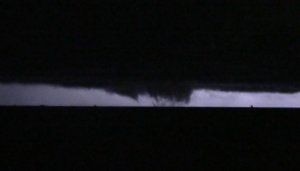
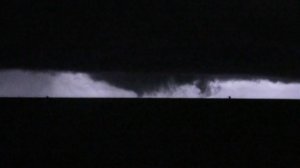
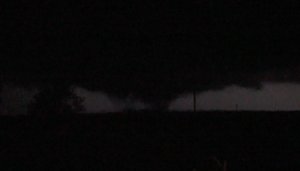
All of those questions determine if I can SAFELY chase at night.
I will ALWAYS chase at night if I feel it is safe to do so and if there is enough lightning for me to see structure and possibly tornado locations. Once on a cell radar is not needed as you use your eyes during the day but at night I refer to it more and stay back a bit more.
Here's a few examples of distance and night tornadoes



joel ewing
EF5
I have long held the opinion that the most fearful tornado photographs and videos are those that are shot at night....the funnel illuminated by lightning. To me, these seem to make the tornado a living, breathing entity....and increase a primal fear in me of utter helplessness in the face of pure evil. That rare photo of the huge, black wedge bearing down on poor Greensburg in 2007 back-lit by lightning is the ultimate example of this. That being said, you'd think I'd want nothing to do with night chasing.....yet for as long as I've been chasing I've been willing, and truth be told (ask my chase partner) actually eager to do it. Being honest here, I'll admit that this endeavor has almost ended in tragedy at least twice in my chase career. May 16th of 1992 I was forced to abandon and flee my chase vehicle when I nearly drove into an F-2 tornado near Creighton, Nebraska at night. I literally had to run on foot into a complete stranger's farm house without first gaining their permission, worrying more about the tornado immediately on my heels than I was about getting shot for illegal entry. Fortunately, the ancient old farmer and his wife, who were probably in their 90's and who had never seen me in their life and were completely unaware of what was happening outside...were "glad to see me!". He just raised his arm with an open hand in a friendly greeting-gesture and with a quizzical, confused look on his face said "hey....don't I know you??" The tornado passed just behind his home and tore up his pivot irrigation equipment. The most recent night time near-tragedy was in June 2011 near Newport, Nebraska on the Holt-Rock county border. A tractor-trailer rig near me and I took a direct hit from a tornado that emerged suddenly from a grove of huge Cottonwood trees next to where I was parked, and flipped the guy's rig and drove vegetation into every crevice and fender-gap in the brand new SUV I had rented.....including past the closed windows and tail-gate. I felt the vehicle begin to raise up and stretch it's suspension system and just KNEW I was going to get launched. I prayed what I thought was my last prayer and actually was extremely angry at myself for "making my wife a widow doing such a selfish venture (chasing)". Luckily, I stayed on the ground, and give all the credit in the world to the Almighty and the fact that the Cottonwoods right next to me HAD to have mitigated the winds somewhat. BTW, both incidents are in Storm Data.
Would I night chase again? Perhaps "I'm dumber than I look" but yeah....I have many times since that 2011 incident. However, I do NOT push the envelope at night like I used to. Both incidents above happened at the very tail-end of a month-long chase vacation, during years that were not too successful. I pushed the envelope in a foolish attempt to grab at least SOMETHING of photographic value so I wouldn't go home empty. The old saying "live and learn"....well, that last incident really got into my head for a long time, and I credit it for making me a much more "mature" chaser with respect to chasing in the dark of night.
Would I night chase again? Perhaps "I'm dumber than I look" but yeah....I have many times since that 2011 incident. However, I do NOT push the envelope at night like I used to. Both incidents above happened at the very tail-end of a month-long chase vacation, during years that were not too successful. I pushed the envelope in a foolish attempt to grab at least SOMETHING of photographic value so I wouldn't go home empty. The old saying "live and learn"....well, that last incident really got into my head for a long time, and I credit it for making me a much more "mature" chaser with respect to chasing in the dark of night.
Taylor Wright
EF2
I've had a lot of successful chases at night. With technology we have now, it's much less dangerous although I've had some close calls. One of my most successful chases was July 7, 2016 in Eureka, KS. The supercell didn't initiate until around 7:30, and didn't get going until after dark. It formed in a volatile environment, although SPC had kept this area out of the 2% due to capping concerns. It produced an EF-3 one MPH away from being an EF-4 just northwest of Eureka, then produced two more simultaneous tornadoes around 9:30 pm that we documented as they hit the town of Eureka. Due to it being dark, we cut it a bit too close and were unaware of the tornado behind us until powerflashes illuminated it less than a few city blocks behind us. We then stopped and documented the tornado as it went through the town, bickering because none of us were confident that we were in the clear. Another effect of chasing in the night is thinking every cloud base is a rotating lowering. Later photos from another chaser a separate tornado about a half mile west of this one that was down at the same time. You can see both tornadoes (although it appears to be just one funnel, the debris cloud in the back is much farther west than the tornado impacting town) illuminated by lightning in the photo below:
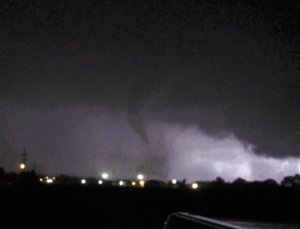
Point is if you rely solely on radar, then you are much more likely to miscalculate how much distance is between you and the storm. Had we left the spot we were photographing lightning from a few minutes later, we likely would've been hit by the tornado that went through town. The disappointing thing with night events is wondering how great these tornadoes would've looked during the day. This would've been a photogenic tornado day if storms fired an hour or two earlier. Same goes for the May 9, 2015 tornadoes that James posted above. Something else I've noticed is storms often have much more impressive structure at night for whatever reason, so if a chase busts from a tornado standpoint, I'm more inclined to take structure/lightning photos after dark.

Point is if you rely solely on radar, then you are much more likely to miscalculate how much distance is between you and the storm. Had we left the spot we were photographing lightning from a few minutes later, we likely would've been hit by the tornado that went through town. The disappointing thing with night events is wondering how great these tornadoes would've looked during the day. This would've been a photogenic tornado day if storms fired an hour or two earlier. Same goes for the May 9, 2015 tornadoes that James posted above. Something else I've noticed is storms often have much more impressive structure at night for whatever reason, so if a chase busts from a tornado standpoint, I'm more inclined to take structure/lightning photos after dark.
ChristofferB
EF2
- Joined
- Aug 27, 2009
- Messages
- 197
The only time we really chased after dark was the Lacrosse, KS tornado in May 2012, which first formed right at dusk. But even that one I can't say we actively chased for too long after dark; we actually called it a night and began to bail out to the south, but then stopped to continue watching it move away from us. .. We could have theoretically ran right into that one as we bailed south - a reason not to chase at night.
That night, me and my chase partners did EXACTLY that. We saw the sunset tornado, stopped for some lightning shots and then headed back home as we had drive all night for me to catch my flight the morning after. As we were driving on the road, I kept my eyes open a mile to our right where we anticipated a possible tornado (it was my 2nd chase so I didn't know much). The skies were heavily lit up by lightning and during one of those flashes something caught my eye - and it wasn't on the field next to us. I looked up and the next flash showed a perfect tube just above us. It was roping a bit but the base of the rotation was exactly above us, but the tornado was touching ground somewhere next to us (I couldn't see where). It was scary as hell! I was very excited to see the photos of the tornadoes afterwards - apparently we must have driven past two tornadoes in the dark that night.
John Olexa
EF5
Only night chasing I did was to shoot lightning. I'm also at the age now where come 9:00 10:00 pm, forget it. I remember waking up to lightning at all hours of the night, getting up & going shooting!, being out at 3am on a work night! Good 'ol days lol.
Devin Pitts
EF2
I successfully chased my first nocturnal tornado last June, and I don't know that I really want to attempt it again. I could barely tell it was even there, and I didn't want to call it a tornado at all until the NWS confirmed it with a survey the next day. Maybe on a backyard chase I could see myself doing it again as I at least know the road network here, but I wouldn't try it while on a chasecation in an unfamiliar area.
Similar threads
- Replies
- 4
- Views
- 214
- Poll
- Replies
- 12
- Views
- 1K
- Replies
- 3
- Views
- 504
- Replies
- 23
- Views
- 3K
- Replies
- 8
- Views
- 977

